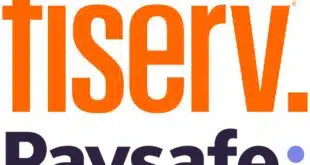When the Federal Reserve’s FedNow real-time payments service debuted commercially 13 months ago, the story mainly focused on the general concept of immediate money transfers. But since then the payments industry has been busy refining that concept and working on service-ready applications.
One of the most talked-about of these applications is a service called request for payment (RFP), which enables a party to send a “bill” digitally to another party to trigger an immediate digital payment in return. Now, with the commercial launch of FedNow, and with more than 900 financial institutions participating in the new network, that concept is quickly taking shape and capturing the imagination of banks and businesses alike, according to Fed officials.
In offering RFP, FedNow has joined The Clearing House’s RTP network, which has enabled the service since it began operations in 2017. Now, TCH is moving to expand RFP dramatically this year, the network told Digital Transactions News in May. TCH is owned by 20 of the world’s biggest commercial banks
Industry players stress the importance of the ISO20022 financial-messaging standard in supporting RFP. In a nutshell, ISO20022 “is a standard, one that many different payment rails are coalescing around,” said Blake McDaniel, an assistant vice president at the Federal Reserve who spoke as part of a panel discussion on RFP Thursday at the MPC24 payments conference in Atlanta.

That “coalescing” is unfolding rapidly, other speakers on the panel noted. Mark Majeske, a senior vice president at Alacriti Inc., a money-movement fintech based in Bridgewater, N.J., noted his company has seen “about 80,000 transactions” for RFP “in the last few months” alone. “We’re looking at another year to year-and-a-half” for a breakout, he noted, at which point, the service “is going to be huge.”
One reason for this optimism is that banks that have joined FedNow are getting onboard RFP as an essential application, Majeske said. “There are people putting in turnkey systems” that “can automate the entire transaction flow,” he told the audience. This effort, he said, could help commercialize RFP and “lower the cost of the transaction.”
One market that could be ripe for RFP is real estate, the panelists said. Title companies, especially, may welcome the service as a way to combat fraud, Majeske said. “If the title company sends me an RFP, I send [the payment], they receive it in milliseconds, and it can work seven days a week.” The Fed’s McDaniel agreed that real estate is a major target market for instant payments, along with earned-wage access, which allows employees to collect their earnings at times when they need the cash sooner than payday. “We’re working with EWA providers,” McDaniel said.

Yet another likely application, Majeske noted, lies in utility payments, where consumers could avert a shut-off after receiving an RFP during a phone conversation with the utility company. “The person pays it on the phone,” Majeske said.
In general, the panel agreed RFP may be among the most likely applications for real-time payments, now that there are two major networks offering the service. ”RFP seems to be pretty solid, concluded Majeske.





